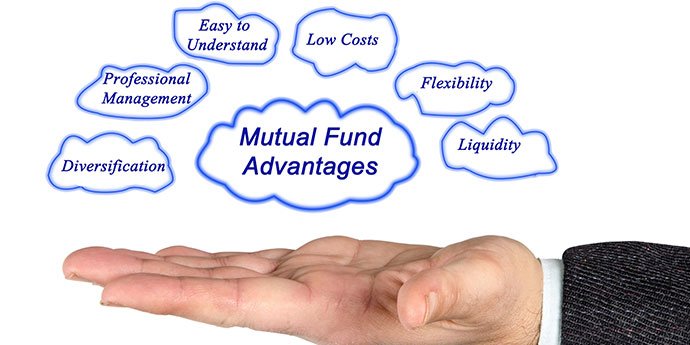
Your money is managed full-time by professionals who study, select and monitor the performance of their portfolio. It also allows you to diversify across different companies and sectors, thus spreading your risk even when you do not have much money, as some mutual funds accept investors with very little initial payments. It is also liquid, allowing you to easily redeem the shares any time at the current NAV.
A fund earns income from the dividends and interest on the securities it holds in its portfolio. The income, minus expenses, is paid out to all shareholders through dividends. The fund also has a capital gain when the prices of its securities go up.
Most funds distribute the capital gains to investors by year end, minus capital losses. You can choose to receive the payments via check or reinvest it in the fund to acquire more shares.
You can also gain if the value of a fund’s portfolio goes up, which causes the NAV of your shares to also increase.
What are the disadvantages?
On the negative side, there are still risks and you may still lose money even when you are invested in a mutual fund.
Despite negative returns, you will still have to pay sales charges, annual fees, taxes, shareholder transaction costs, investment advisory fees, and marketing and distribution expenses. These costs are shouldered by investors and therefore reduce the amount of money you can keep.
You cannot control or influence a portfolio’s components, and the fund manager decides on what to buy and sell as well as the timing of the trades.
There is also uncertainty over the price of shares, as the NAV is usually calculated at least once a day, and is released after trading hours. This compares to directly buying an individual stock, which allows you to easily get real-time price information by checking financial websites or calling your broker.
There is a risk that you will lose some or all of your money because the securities’ values — as well as dividend payments — fluctuate depending on market conditions.
Study the fund’s prospectus and stockholder reports to understand its investing strategy and identify the risks before you shell out money. Those with higher returns may take on higher risks.
Also remember that a fund’s historical performance is not an accurate gauge of future returns, although it may give you an idea on how stable or volatile the fund is.
How about ETFs?
An ETF, or exchange-traded fund, is similar to a mutual fund but with some differences.
An ETF is a basket of stocks that tracks a particular index, but it can be traded like an individual stock. With ETFs, you can buy, sell, go short, put stop losses and buy them on margin. ETFs will give you the diversification of mutual funds, and lets you enjoy the versatility of stocks.
Some examples of ETFs that track indexes are the DJIA ETF for the Dow Jones Industrial Average and the ETF for NASDAQ. The first ETFs were created to mirror broad market indexes, but new ones were developed recently to track sectors, fixed income, global investments, commodities and currencies.
Why buy an ETF?
If you are interested in an industry but you cannot choose which stock to buy or do not have the time for research, then an ETF may be good for you. Unlike mutual funds with active money managers, ETFs are passively managed as they are created to replicate an index or a sector.
You can dispose of an ETF by redeeming it, meaning you give the shares to the fund in exchange for the underlying shares. You can also make money by selling it on the secondary market.
Every quarter, an ETF usually pays out dividends earned from the underlying shares. The cash is deposited in your brokerage account like a regular stock’s dividend. In case you want to reinvest that money, you would have to make another purchase.
You can buy only one share of an ETF but most investors buy in board lots, usually composed of 100 shares, as there is higher cost when you buy less than this.
Unlike a mutual fund that can usually be bought only in the country where it is registered, you can buy an ETF regardless of the country where it is traded.
There is greater transparency in an ETF because you can see its components, unlike mutual funds where investing decisions are made by money managers and holdings are reported only twice a year.
If you are concerned with fees charged by mutual funds, you may consider ETFs as they have lower annual fees that are clearly laid out. Because it is passively managed, there are lower marketing, distribution and accounting expenses.
However, you would have to pay a brokerage commission to buy and sell ETF shares. If you trade frequently, the costs may reduce the amount of returns you get to keep.
Mutual funds and ETFs are good alternatives if you want to diversify and spread your risk even when you have little money to invest. Mutual funds are managed by money professionals but may charge higher fees, while ETFs usually charge lower fees as these just track an index or a sector and are passively managed.
For more information, Visit Trade Genie.